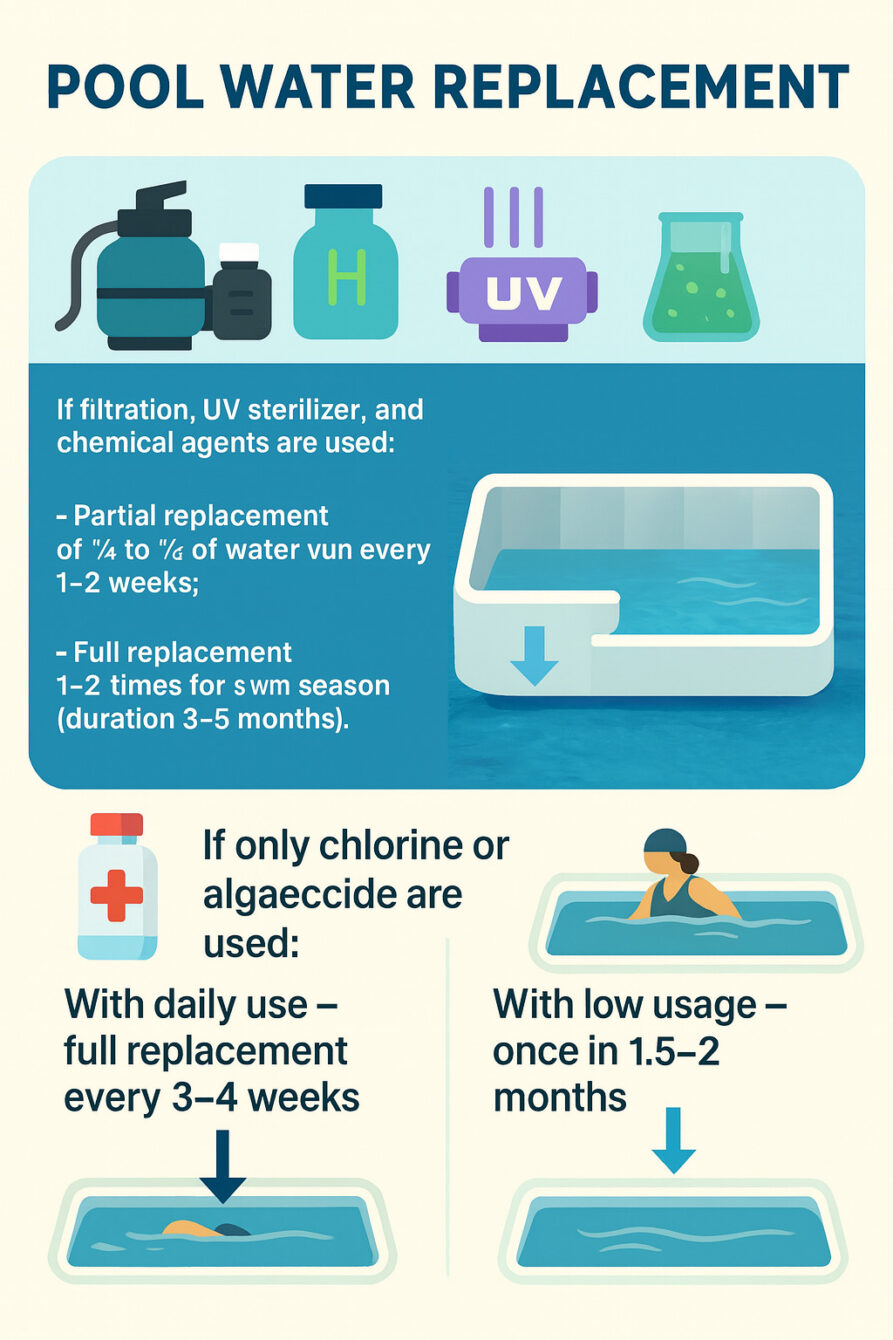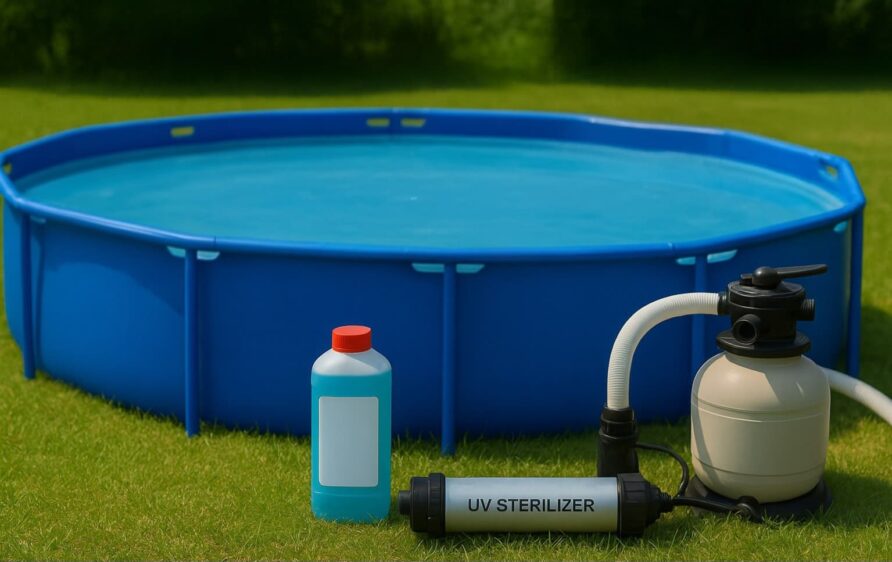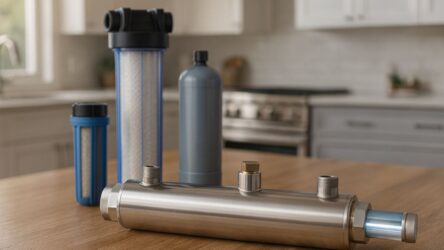Even if your pool water looks crystal clear, it doesn't mean it's safe. Whether you own a backyard frame pool or a seasonal above-ground setup, invisible contaminants accumulate daily—from microorganisms to chemical byproducts. So how frequently should you replace the water to ensure a safe swimming environment? Let’s explore the key factors that affect water change intervals and how to prolong the freshness of your pool.
Seasonal Guidelines for Water Replacement
Even with proper filtration, UV sterilizers, and chemical treatment, you still need to refresh the water periodically:
- Partial water change: Replace ¼ to ⅓ of the water every 1–2 weeks.
- Full water change: Do this 1–2 times per swimming season (typically 3–5 months).
If your pool doesn’t have a water treatment system—just chlorine or algaecide—the replacement cycle shortens:
- With heavy use (daily swimming): Full water change every 3–4 weeks.
- With light use: Change the water every 1.5–2 months—only if it remains clear and odor-free.

The exact schedule depends on the pool’s load, quality of water treatment, and frequency of chemical dosing.
Why Does Pool Water Degrade Over Time?
Regardless of your water treatment setup, your pool will gradually accumulate contaminants:
1. Microbiological Factors
- Bacteria and viruses resistant to chlorine.
- Biofilm buildup inside pipes and on surfaces.
- Mold and fungi growth, especially in corners or low-circulation zones.
2. Chemical Factors
- Accumulation of disinfectants and their byproducts in small or poorly maintained pools.
- pH imbalance from overuse of chemicals.
3. Organic Pollution
- Sweat, saliva, and cosmetics—each swimmer introduces organic matter.
- Leaves, pollen, and insects—especially in open-air pools.
- Debris from rain and windborne contaminants.
What Microbes Can Thrive in Dirty Pool Water?
Without proper hygiene and maintenance, several dangerous microorganisms can develop:
- E. coli – indicates organic contamination, causes gastrointestinal illness.
- Staphylococcus – leads to skin irritation and infections.
- Pseudomonas aeruginosa – chlorine-resistant, causes ear infections and dermatitis.
- Candida and other fungi – affect skin and mucous membranes.
- Legionella and adenoviruses – pose health risks when water is swallowed.
Even seemingly clean water can harbor these pathogens, especially in warm conditions.
How to Keep Your Pool Water Clean for Longer
1. Use a pool cover. A simple tarp or solar blanket can significantly reduce pollution from debris, insects, and weather.
2. Install basic filtration. A mechanical filter will remove particles like dust, sand, and leaves—but it won’t stop microbes.
3. Add UV sterilization. A UV disinfection system like UVL-AQUA uses 254 nm UV-C light to destroy bacteria, viruses, and algae—without changing the water’s chemistry or irritating swimmers' skin and eyes.
4. Use complementary chemicals. This can include hydrogen peroxide (H₂O₂), algaecides, or chlorine-based compounds. Regular shock treatments are recommended for heavy use or extreme heat.
By combining filtration, UV disinfection, and targeted chemical treatment, you’ll maintain safe, crystal-clear water while reducing the need for frequent refills. The result? A cleaner, healthier, and more enjoyable swimming season—without unnecessary hassle.







